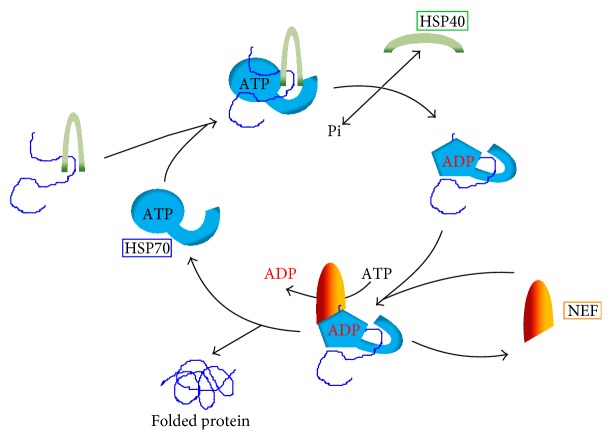Figure 2.
Overview of the HSP70 chaperone cycle. In the initial step, the substrate (unfolded protein), bound to the HSP40, forms a complex with the HSP70 in its ATP-loaded state. ATP hydrolysis promotes the transfer of the substrate to the peptide-binding pocket of HSP70. Following substrate transfer, HSP40 leaves the complex and the nucleotide exchange factor (NEF) is recruited to the HSP70-substrate complex, stimulating the ADP-ATP exchange in HSP70. ATP binding to HSP70 induces a conformational change leading to the release of both NEF and substrate.

